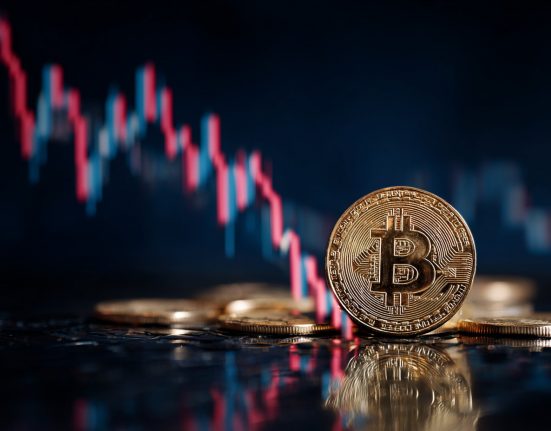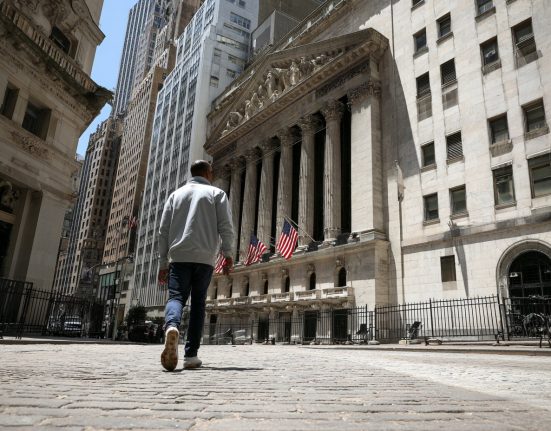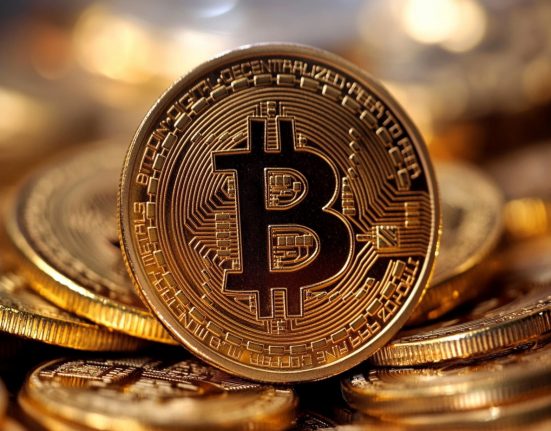The economy is getting harder to predict. Prices are still rising, interest rates aren’t moving and new tariffs are causing more stress. After President Donald Trump said all Chinese goods would face a 145% tariff, China fired back with 125% tariffs on U.S. exports.
People are feeling the heat as Trump tariffs stir up fresh waves of market chaos. Stocks dip, rebound and dip again, while confidence takes a hit. A new University of Michigan survey shows consumer sentiment plunged 11% this month, one of the lowest readings in years—and a clear sign nerves are fraying.
At the same time, more people are searching for answers online. Phrases like “best place to put money before the market crashes” and “safest place to put your retirement money” are trending on Google. Americans aren’t just worried, they’re looking for a secure place to park their cash.
A few weeks ago, things looked more stable. The economy was growing, businesses were making money and global markets were recovering. But in early April, the mood shifted. Major U.S. stock indexes went up and down all week as investors tried to make sense of new trade threats and inflation concerns.
Big names are sounding the alarm. Jamie Dimon, CEO of JPMorgan Chase, called it a time of “considerable turbulence.” The New York Fed warned that growth could slow while inflation rises, and the University of Michigan’s Survey of Consumers revealed a sharp rise in short-term inflation expectations, with projections for the year ahead climbing from 5% in March to 6.7% in April.
In this environment, the question becomes more urgent: Where should you put your money to keep it safe and still earn something?
We asked financial experts for advice to help you figure out the smartest, safest moves right now, whether you’re just starting out, saving for retirement or sitting on a pile of cash waiting for things to calm down. Here’s what they told us.
Where Is the Best Place To Put Money in an Uncertain Economy?
Right now, the safest bets are the boring ones. The old standbys are high-yield savings accounts (HYSAs) and certificates of deposit (CDs). These accounts won’t make you rich, but they’ll help you stay grounded while the market figures itself out.
They’re also federally insured up to $250,000 per account, per bank, so your money stays protected no matter what the market does.
For Short-Term Safety and Flexibility: High-Yield Savings Accounts
Stashing money in savings is a go-to move when things get rocky, and high-yield savings accounts are the top-tier option, offering way more interest than a basic savings account.
Right now, savers can get more than 4.00% with some of the best high-yield savings accounts. If you put $10,000 into a HYSA at that rate, you’d earn about $466 in a year, with no risk and full access to your money.
Inflation can quietly chip away at your cash if it’s not earning enough interest. With prices increasing 2.4% a year, a savings account earning just 1.50% APY means your money can’t keep pace with inflation. Your balance is growing, but the funds in your account buy less over time. You’re actually losing money, even as your balance rises.
That’s why it’s important to keep track of inflation and savings interest rates. Be sure to shop around for the highest rates possible so you’re not leaving anything on the table. You can check the current inflation rate on the U.S. Bureau of Labor Statistics’ website to guide your choices.
Want a Guaranteed Return? Consider Certificates of Deposit
Certificates of deposit (CDs) offer fixed interest over a set time. Think of it as putting your money in time-out while it quietly grows. Some six-month CDs are paying 4.35% APY, and 18-month options are offering 4.10% APY.
If you put $10,000 into a six-month CD earning 4.35%, you’d make about $217 in interest by the time it matures. That’s more than four times what you’d earn in a typical savings account.
Go a little longer with an 18-month CD at 4.10%, and you’d earn around $615 in interest. Your money’s locked up for a year and a half, but the extra return might be worth it if you don’t need the cash right away.
Holding a CD in a tax-advantaged account like a Roth or traditional IRA makes it even more effective. In a traditional IRA, your interest grows tax-deferred.
In a Roth, you won’t owe taxes at all as long as you follow the rules. In a Roth IRA, you don’t pay taxes on the money you earn as long as you’re at least 59½ years old and the account has been open for five years. Take it out too soon, and you could owe taxes and a penalty.
Long-Term Inflation Fighter: Treasury Inflation-Protected Securities (TIPS)
If you’re saving for something big down the line, such as retirement, a future home or college, TIPS are a safe, inflation-adjusted option.
Here’s how they work: Your original investment (called the principal) rises and falls with inflation. Every six months, you get interest based on that adjusted amount. So if inflation rises, your payments go up too.
Right now, inflation is 2.4%. If you buy $1,000 in TIPS with a 1.00% interest rate and inflation pushes your principal up to $1,030, your next interest payment will be based on that higher amount.
You can buy TIPS through TreasuryDirect.gov in $100 increments. Interest is taxed at the federal level, but not by states or local governments; an added perk for those in high-tax states.
TIPS are best for long-term savers who want to protect their purchasing power while keeping things low-risk.
Where Is the Safest Place To Put Your Retirement Money?
If you’re close to retirement, safety matters more than growth. That means keeping enough cash in low-risk accounts—like high-yield savings accounts, CDs or short-term Treasury bills—to cover two to three years of living expenses, says David Johnston, managing partner at Amwell Ridge Wealth Management.
“You never want to be a forced seller into a buzzsaw of a down market,” Johnston says.
Kristin Kelly, assistant vice president at U.S. Bank, agrees: “Have ample cash or maturing securities like CDs or bonds to meet liquidity and near-term spending needs to avoid monetizing recent stock market declines.”
Kelly also cautions retirees to stick to their investment plan.
“Avoid trying to time the market by dramatically changing your mix either defensively by raising cash or aggressively trying to ‘buy the dips’,” she says. Instead, make small, steady moves to keep your portfolio aligned with your risk tolerance and financial goals.
For Wealth Holders: Don’t Let Cash Sit Idle
If you already have a lot of cash, such as through inheritance, income or long-term savings, the goal isn’t to let it sit or to invest all at once. Create a plan based on your timeline and goals.
“Work with an advisor to determine your financial plan that addresses your short-term needs and long-term goals,” says Kelly. “Determine a strategy to invest the appropriate cash amount toward your long-term asset mix over time and begin today.”
Diversifying beyond U.S. stocks, especially in volatile times, can help balance your risk. Consider foreign equities or income-generating bonds to round out your portfolio.
For Gen-Z and New Investors: Use Time to Your Advantage
If you’re young, you’ve got the most powerful tool in investing: time.
“Gen-Z and Millennials can stay grounded by zooming out and following tried and true investment strategies,” says Jordan Mangaliman, owner of Goldline Financial Services.
“By making regular contributions through dollar-cost averaging, investing in the S&P 500 and having a long-term view of their investments, investors will build wealth.”
Start with what you can. Even $200 a month in a Roth IRA at a 7% return could grow into over $500,000 in 40 years. The key is consistency.
Experts agree not to panic when markets dip.
“Market crashes and corrections are a natural, regular and necessary part of market cycles,” Mangaliman said. “Those who stayed invested and did not panic sell experienced outstanding returns.”
Bottom Line
If you’re wondering where to put your money before the market crashes or just want to stay steady in uncertain times, start simple:
- Use a high-yield savings account for short-term savings and flexibility
- Lock in a CD to earn more while rates are high
- Consider TIPS for long-term, inflation-protected growth
- Keep two to three years of expenses in safe accounts if you’re near retirement
- If you’re younger, stay invested, stay consistent and play the long game
When the headlines get loud, boring is brilliant. Let your money grow quietly while the rest of the world figures itself out.








